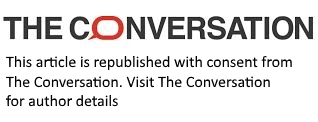Yumna Kassab’s ‘post-novels’ have a bit of everything
- Written by Jessica Gildersleeve, Professor of English Literature, University of Southern Queensland

Yumna Kassab’s new book, The Theory of Everything, is not a typical novel. It is, its blurb declares, “a fictional theory, a rant, a manifesto […] five mini-novels or else five post-novels”.
But what is a post-novel? And what is the theory of everything?
Review: The Theory of Everything – Yumna Kassab (Ultimo Press)
A novel is usually thought of as a work of prose fiction that seeks to represent the world (or its own world, if we think of fantasy or science fiction, for instance). It generally includes characters, a recognisable setting, and a plot.
A post-novel, like an anti-novel, would disrupt those conventional narrative expectations. Famous anti-novels include James Joyce’s Finnegans Wake (1939), Laurence Sterne’s Tristram Shandy (1759-67), and Vladimir Nabokov’s Pale Fire (1962), all of which equivocate or destabilise a traditional sense of story, character and setting.
The Theory of Everything is a “post-novel” composed of vignettes and fragments, parts of stories, poems, and other prose pieces. It presents a kaleidoscopic view of contemporary society – a “waste land”, perhaps, to cite another work of experimental literature by T.S. Eliot.
The book is the result of Kassab’s wide reading. It has been written in appreciation: a long list of authors to whom Kassab is indebted appears at the end of the book, from Omar Sakr to Virginia Woolf, Stephen King to Kris Kneen, Edward Said to Stephanie Meyer – although not, strangely, Joyce, Sterne or Nabokov.
But more than anything else, The Theory of Everything is a treatise on intersectional feminism. It traces the effects of social and cultural expectations on women and men in different places and times. Many of its vignettes take the form of lists, documenting the cumulative effects of women’s experiences.
Sacrifice and prejudice
Kassab spent her formative years in western Sydney, studying medical science and neuroscience. The Theory of Everything is her fifth book in as many years. Her previous works – two collections of short stories and two novels – have been shortlisted for major national and state literary awards. She is also the inaugural Parramatta Laureate in Literature, a position she has held since 2023.
Post-everything
Modern, the next mini-novel, begins with an epigraph: “Modern: uncertainty inflicted upon the world.” Its vignettes depict an apocalyptic vision of a future (or present), where children who possess all material things suffer the loss of true joy, produce costs so much it is replaced with inferior alternatives, and people “[give] up and […] just do without”. There are dedicated places to jump to one’s death.
The section documents the damage done to human consciousness by handheld technology and permanent “connection”. It asks why one would need to go “outside anyway”. Alongside this, an index of 100 Points of Identity mocks government systems of identification by replacing the “points” with actual markers of selfhood: skills possessed, languages spoken, places experienced.
The fourth mini-novel, Silver, tells the story of a movie starlet named Lucille. The construction of her image coincides with the disappearance of her real self. As Lucille recites in one of her films:
Funny this disappointment, that the real should not be as vivid. In time, perhaps our preference becomes the dream.
Just as Modern reflects on the loss of the self, Silver echoes Plato’s allegory of the cave, in which people are fooled into believing shadows are reality.
Like the philosopher who is freed from the cave and can see the truth, Kassab exposes the flaws in our thinking. If a novel’s purpose is to reflect our world, this post-novel’s purpose appears to be to encourage us to question that world, to think differently, to see beyond the shadows.
The final section of The Theory of Everything, titled Absurd, describes the narrator meeting a vampire. Even as she recognises the impossibility of this encounter, she offers up freedom and transformation as the goals of her treatise. Once again, Kassab challenges our beliefs and expectations of the real.
Perhaps, then, this is the “theory of everything”. Kassab depicts a world that is post-novel, post-real, post-point. Post-everything there is only the truth – but that might be more than one book can convey.
Authors: Jessica Gildersleeve, Professor of English Literature, University of Southern Queensland





